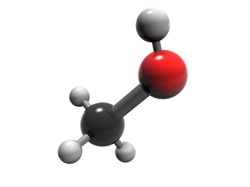Hydrogen-rich methanol for fuel cells
PEM fuel cells are structured something like a lock that makes it easy for boats to pass along a waterway with different levels where there is a barrier between the two bodies of water (low and high) with a bridge over the top. Hydrogen comes into the lock (the anode) and is split into protons (positive hydrogen ions) and electrons. The protons pass through the lock (an electrolyte solution with a membrane) to the other side (the cathode) where they combine with oxygen to produce water and heat. Both reactions require catalysts. The electrons go over the bridge (an electrical circuit) to produce electricity to power devices. To produce adequate power, numerous cells are combined in a so-called stack. many PEM fuel cells currently use pure hydrogen as the input or fuel. However, although hydrogen fuel cells were thought to be a solution to the world’s energy crisis, the use of pure hydrogen has posed numerous storage and processing challenges that have inhibited its widespread use. EU researchers working on the ‘Compact direct (m)ethanol fuel cell for portable application’ (Morepower) project developed new materials and methods enabling the use of hydrogen-rich and readily available methanol and, to a lesser extent, ethanol as a fuel source. specifically, the investigators developed new proton exchange membranes demonstrating superior performance and properties compared to Nafion membranes. They optimised the anode and cathode reactions and demonstrated enhanced catalytic activity. The researchers carried out extensive experimentation and modelling to produce a novel membrane-electrode assembly (MEA) design for efficient operation at low temperatures with realistic flows and pressures. Finally, they built two single cell test stacks producing 350 Watts of power operating with a 1 Molar methanol solution at 60 degrees Celsius. the opportunities for exploitation of methanol in hydrogen-based fuels cells are exciting. Methanol is a stable, widely produced biodegradable liquid at room temperature and it contains more hydrogen than any other liquid fuel. It is well positioned to spur Europe's hydrogen-based fuel cell market to new heights and the Morepower project added fuel to its fire.



